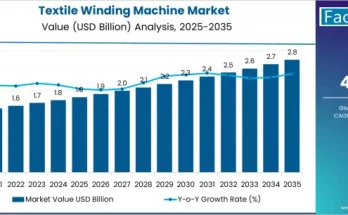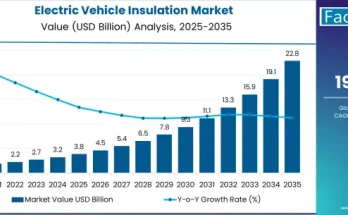The global heavy-duty truck market is on a consistent growth trajectory with an acceleration in industrialization, urbanization, and the increasing demand for sturdy logistics and transportation systems. With construction and infrastructure schemes increasing in both developed and developing economies, the requirement for performance-oriented heavy duty trucks is likewise increasing. These trucks are a key enabler of operations in industries such as construction, mining, manufacturing, and freight logistics.
Additionally, the sector is experiencing a revolution with the adoption of newer technologies. Developments in telematics, fuel efficiency, and safety systems are improving the operational efficiency and dependability of heavy-duty trucks. The trend toward sustainable transport is also affecting market forces, with more investment in electric and hybrid trucks to comply with changing environmental regulations and lower carbon emissions.
Autonomous driving technology is also breaking through as yet another game-changer, holding the promise of enhancing productivity, lowering operating costs, and meeting driver shortages. Concurrently, governments across the globe are adopting strict emission regulations and promoting cleaner vehicles, thus further driving the shift toward a modernized fleet of heavy duty trucks.
Market Overview:
Heavy duty trucks, encompassing Class 7 and Class 8 vehicles, are integral to industries such as logistics, construction, agriculture, defense, and mining. These vehicles are essential for transporting large volumes of goods and materials, supporting the backbone of global supply chains.
Heavy Duty Truck Market Size, Growth Analysis Report – 2034
| Metric | Value |
| Global Market Value (2024) | US$ 194.82 Billion |
| Forecasted Global Market Value (2034) | US$ 305.46 Billion |
| Global Market Growth Rate (2024–2034) | 4.6% CAGR |
| North America Market Size (2024) | US$ 50.26 Billion |
| East Asia Market Share (2034) | 33.7% of Global Market |
| South Korea Market Value (2034) | US$ 13.58 Billion |
| Dump Truck Demand Growth Rate (2024–2034) | 4.8% CAGR |
Key factors contributing to heavy duty truck market growth include:
- Industrial Expansion: The surge in industrial activities necessitates efficient transportation of raw materials and finished products.
- Infrastructure Development: Ongoing and planned infrastructure projects worldwide require heavy-duty trucks for material transport and construction activities.
- E-commerce Growth: The boom in e-commerce has led to increased demand for freight transportation, bolstering the need for heavy duty trucks.
- Technological Advancements: The integration of electric and autonomous technologies is transforming the heavy duty truck landscape, offering sustainable and efficient solutions.
Manufacturers are focusing on producing electric and hybrid-powered trucks to comply with emission regulations and meet the growing demand for eco-friendly transportation options. Additionally, efforts are being made to reduce production costs through remanufacturing techniques and the use of cost-effective materials.
Regional Insights: Heavy Duty Truck Market
North America:
In 2024, the North American heavy-duty truck market is estimated at US$ 50.26 billion, accounting for approximately 25.8% of the global market share. The region’s growth is driven by the integration of advanced technologies, such as autonomous driving systems and electric powertrains, to enhance efficiency and reduce emissions. The expanding food industry also contributes to the increased adoption of refrigerated trucks.
East Asia:
East Asia is projected to hold 33.7% of the global heavy duty truck market share by 2034. China, in particular, is a significant contributor, with a market value of US$ 35.52 billion in 2024, expected to reach US$ 58.98 billion by 2034 at a CAGR of 5.2%. The region’s growth is fueled by rising import-export activities, industrial expansion, and government investments in road infrastructure.
South Korea:
South Korea’s heavy duty truck market is anticipated to reach US$ 13.58 billion by 2034. The country’s focus on technological innovation and sustainable transportation solutions contributes to this growth.
Key Trends & Forecast:
- Electrification of Fleets: Manufacturers are increasingly investing in electric and hybrid heavy-duty trucks to meet emission standards and cater to the demand for sustainable transportation. Battery-powered trucks are gaining traction due to their efficiency and eco-friendliness.
- Autonomous Driving Technologies: The development of automated trucks equipped with smart sensors and algorithms is revolutionizing the logistics sector, offering error-free driving and reduced reliance on human drivers.
- E-commerce Expansion: The rapid growth of e-commerce is increasing the demand for various types of freight trucks, including semi-trailers, flatbeds, dry vans, reefers, and box trucks, to ensure efficient delivery services.
- Smart City Initiatives: Government investments in smart city projects, particularly in the Asia Pacific region, are creating opportunities for heavy duty truck suppliers, especially in the construction and logistics sectors.
Applications & End-Use Outlook:
Heavy-duty trucks serve various applications across multiple industries:
- Logistics: The backbone of supply chains, heavy-duty trucks are essential for transporting goods over long distances, ensuring timely deliveries.
- Construction: Trucks like dump trucks and haulers are vital for transporting construction materials, supporting infrastructure development projects.
- Agriculture: Tractors and haulers are extensively used in farming activities, aiding in the transportation of produce and equipment.
- Defense: Heavy duty trucks are employed for transporting military equipment and supplies, playing a crucial role in defense logistics.
- Mining: Specialized trucks are used to transport minerals and other materials from mining sites to processing facilities.
Among these, the logistics sector is experiencing significant growth due to the increasing demand for efficient transportation solutions in the wake of global trade expansion and e-commerce proliferation.
Competitive Landscape:
The heavy-duty truck market is marked by a high degree of competition, with leading manufacturers competing on technology innovation, fuel efficiency, durability, and after-sales services. Global players are also focusing on strategic collaborations, acquisitions, and regional expansions to strengthen their market position and broaden their customer base.
Key Players and Their Strategies:
Daimler AG – Through its brands like Freightliner and Mercedes-Benz Trucks, Daimler leads innovation in electric heavy-duty vehicles and autonomous technology.
Volvo Group – A strong proponent of sustainable transport, Volvo is investing heavily in electric truck production and autonomous solutions.
PACCAR Inc. – Known for brands like Peterbilt and Kenworth, PACCAR is pioneering fuel-efficient trucks and advanced telematics.
Tata Motors and Ashok Leyland (India) – These players dominate the South Asian market with robust and cost-efficient heavy-duty trucks tailored to rough terrains.
Dongfeng and FAW Group (China) – With a strong domestic base and increasing international expansion, Chinese players are rising as formidable competitors in both pricing and volume.
Navistar International – Focused on North America, Navistar emphasizes reliability and total cost of ownership.
These companies are rapidly shifting focus toward electrification and digitization, which includes incorporating telematics, predictive maintenance, driver assistance systems, and AI-based logistics management tools into their trucks.
Conclusion:
The heavy-duty truck market is on a trajectory of steady growth, driven by industrial expansion, technological advancements, and the need for efficient transportation solutions across various sectors. The integration of electric and autonomous technologies is set to redefine the market landscape, offering sustainable and efficient alternatives to traditional trucks. As industries continue to evolve, the demand for heavy duty trucks will remain integral to supporting global logistics and infrastructure development. Accessing comprehensive market analyses can guide stakeholders in making informed decisions and capitalizing on emerging opportunities in this dynamic market.



